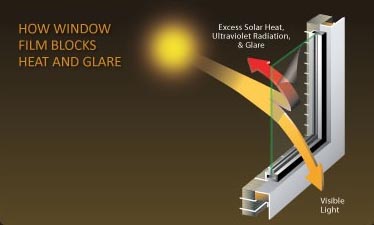How Does Window Tinting and Window Film Work?
Window Film versus Window Tint
The terms window film and window tint are synonymous. However, window tint is often used to refer to automotive applications and window film for commercial or residential film applications.


What is window film or window tint?
Vista™ Window Film/window tint is made out of a laminate of strong polyester and metalized coatings bonded by adhesives. It features a scratch-resistant coating on one side and a mounting-adhesive layer and a protective-release liner on the other side. When the release liner is removed, the side of the film with the adhesive is applied to the interior surface of the glass. Window film/window tint can be clear, colored, or patterned to blend with a wide variety of design schemes. Various thicknesses are also available for solar, safety, or security applications.
So, How Does Window Film Work?
Radiation from the sun features three components: visible light we can see as well as infrared and ultraviolet (UV) rays, which we can feel. When solar radiation strikes glass, window film blocks the UV rays and regulates the amount of heat and light which passes through the glass. The amount of heat and light which window film rejects depends on the type selected.
Window film is energy efficient by enhancing the solar and thermal performance of a building’s windows. By reducing excessive solar heat gain, it reduces cooling loads and peak demand. There are also low emissivity or low-e window films which improve the insulating properties of windows, which increases savings during the summer as well as offering winter savings to reduce lost heat.
Learn more about how window film works with residential window film or commercial window film.

